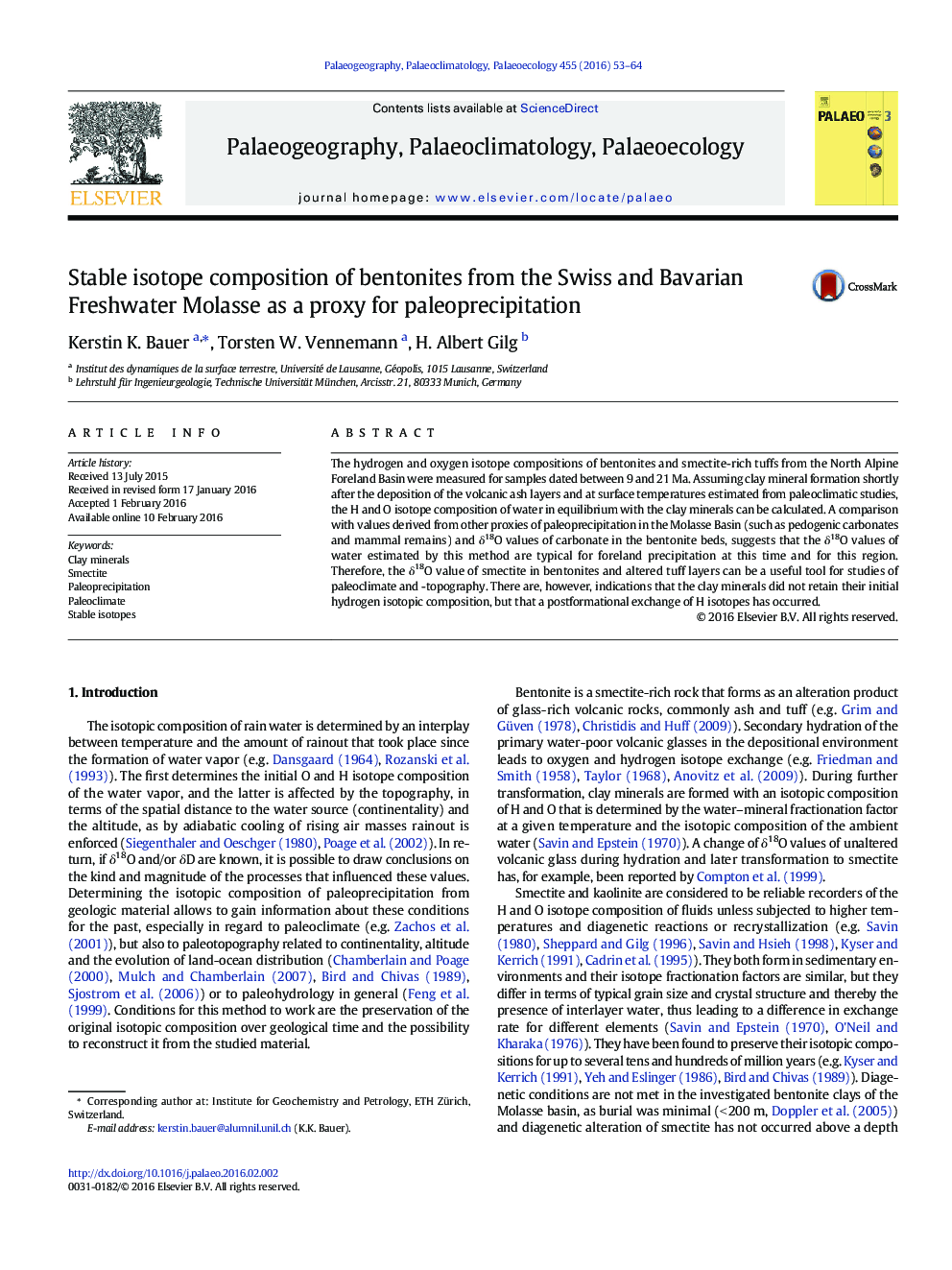| Article ID | Journal | Published Year | Pages | File Type |
|---|---|---|---|---|
| 4465688 | Palaeogeography, Palaeoclimatology, Palaeoecology | 2016 | 12 Pages |
The hydrogen and oxygen isotope compositions of bentonites and smectite-rich tuffs from the North Alpine Foreland Basin were measured for samples dated between 9 and 21 Ma. Assuming clay mineral formation shortly after the deposition of the volcanic ash layers and at surface temperatures estimated from paleoclimatic studies, the H and O isotope composition of water in equilibrium with the clay minerals can be calculated. A comparison with values derived from other proxies of paleoprecipitation in the Molasse Basin (such as pedogenic carbonates and mammal remains) and δ18O values of carbonate in the bentonite beds, suggests that the δ18O values of water estimated by this method are typical for foreland precipitation at this time and for this region. Therefore, the δ18O value of smectite in bentonites and altered tuff layers can be a useful tool for studies of paleoclimate and -topography. There are, however, indications that the clay minerals did not retain their initial hydrogen isotopic composition, but that a postformational exchange of H isotopes has occurred.
